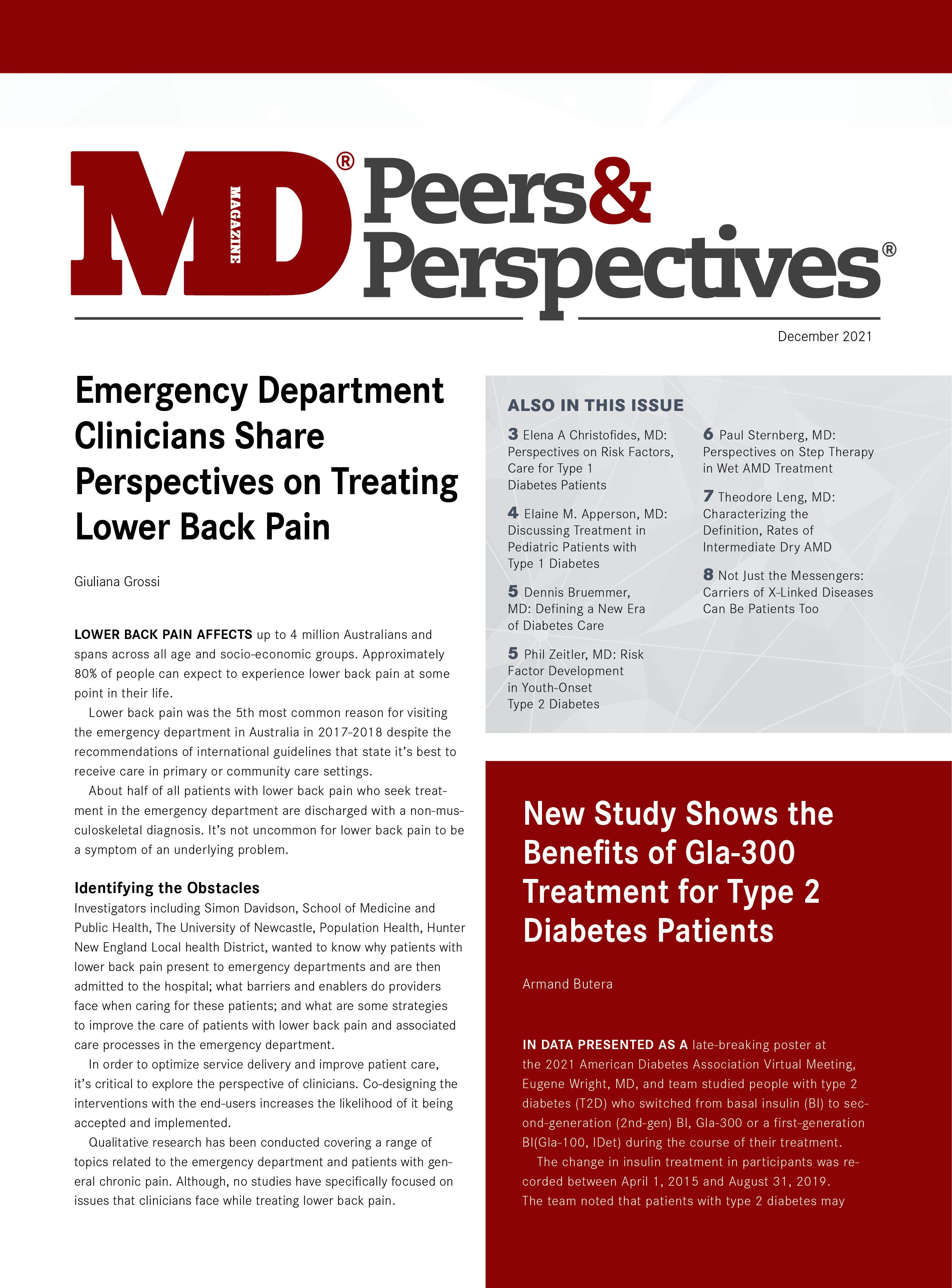Publication
Article
Peers & Perspectives®
New Study Shows the Benefits of Gla-300 Treatment for Type 2 Diabetes Patients
Author(s):
Of the two diabetes treatments included in the study, patients with Gla-300 had lower recorded total health costs and greater commitment to treatment.

In data presented as a late-breaking poster at the 2021 American Diabetes Association Virtual Meeting, Eugene Wright, MD, and team studied people with type 2 diabetes (T2D) who switched from basal insulin (BI) to second-generation (2nd-gen) BI, Gla-300 or a first-generation BI(Gla-100, IDet) during the course of their treatment.
The change in insulin treatment in participants was recorded between April 1, 2015 and August 31, 2019. The team noted that patients with type 2 diabetes may change BI therapy for clinical, personal, and financial reasons. Formulary changes are also common.
There were 3077 participants in each cohort, with a mean age of 68 years. Roughly half of the participant group were female, and data on each participant was collected using the Optum Clinformatics claims database.
Participants were followed for 12 months or until planned disenrollment or death. Cohorts were propensity score matched (PSM) on baseline demographic/clinical characteristic, and the outcomes evaluated during the study were persistence (days on treatment without discontinuation), adherence (proportion days covered), healthcare resource utilization and costs.
The investigators found that participants with T2D who switched to Gla-300 showed a greater persistence and adherence to therapy then those who switched to a 1st-generation BI. A change in A1C from baseline to 12 months was also significantly greater with participants who switched to Gla-300.
Additionally, while participants who switched to Gla-300 did have significantly higher pharmacy costs, they also had lower all-cause hospitalization and hypoglycemia-related ER costs. In general, lower total health costs were recorded in Gla-300 patients.
Total healthcare costs for participants who switched to Gla-300 were $41, 255 ($22,613 of which was diabetes related), while the total healthcare costs for participants who switched to 1st-generation BI were $45,316 ($25,165 of which was diabetes related).
Additionally, persistence and adherence in the former group were also recorded as being higher than 1st-generation BI participant. Persistence and adherence were recorded as 45.5% and 42.8% for Gla-300 participants, and 42.1% and 38.2% for 1st-generation participants.
“Switching to Gla-300 was associated with significantly better persistence, adherence, and—despite these associated costs—lower all-cause healthcare resource utilization vs. switching to a 1st-generation BI, in people with T2D previously treated with BI therapy,” the team wrote. “This is the first study to assess these outcomes in tandem.”
Wright and colleagues lead the charge in terms of studying diabetes and diabetes management. As they noted in the study, patients may switch to different insulin treatments for a variety of reasons.
However, their study shows that while Gla-300 patients might have higher pharmacy costs, their overall health costs were significantly lower, while their overall commitment to diabetes treatment was significantly higher.
The study, “Real-World Persistence, Adherence, Health Care Resource Utilization, and Costs I, People with Type 2 Diabetes (T2D) Switching from Basal Insulin (BI) to Second-Generation BI (Insulin Glargine 300 U/mL [Gla-300]) vs. First-Generation BI (Insulin Glargine 1)", was published online by ADA.






